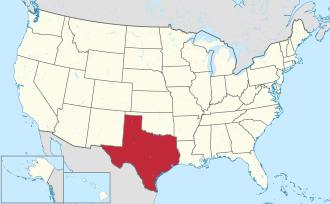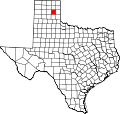Demographics
Historical population| Census | Pop. | Note | %± |
|---|
| 1880 | 56 | | — |
|---|
| 1890 | 203 | | 262.5% |
|---|
| 1900 | 480 | | 136.5% |
|---|
| 1910 | 3,405 | | 609.4% |
|---|
| 1920 | 4,663 | | 36.9% |
|---|
| 1930 | 22,090 | | 373.7% |
|---|
| 1940 | 23,911 | | 8.2% |
|---|
| 1950 | 24,728 | | 3.4% |
|---|
| 1960 | 31,535 | | 27.5% |
|---|
| 1970 | 26,949 | | −14.5% |
|---|
| 1980 | 26,386 | | −2.1% |
|---|
| 1990 | 23,967 | | −9.2% |
|---|
| 2000 | 22,744 | | −5.1% |
|---|
| 2010 | 22,535 | | −0.9% |
|---|
| 2020 | 21,227 | | −5.8% |
|---|
| 2024 (est.) | 20,888 | [6] | −1.6% |
|---|
|
Gray County, Texas – Racial and ethnic composition
Note: the US Census treats Hispanic/Latino as an ethnic category. This table excludes Latinos from the racial categories and assigns them to a separate category. Hispanics/Latinos may be of any race.| Race / Ethnicity (NH = Non-Hispanic) | Pop 2000 [21] | Pop 2010 [22] | Pop 2020 [20] | % 2000 | % 2010 | % 2020 |
|---|
| White alone (NH) | 17,800 | 15,564 | 13,025 | 78.26% | 69.07% | 61.36% |
| Black or African American alone (NH) | 1,309 | 1,055 | 835 | 5.76% | 4.68% | 3.93% |
| Native American or Alaska Native alone (NH) | 169 | 152 | 141 | 0.74% | 0.67% | 0.66% |
| Asian alone (NH) | 88 | 83 | 127 | 0.39% | 0.37% | 0.60% |
| Pacific Islander alone (NH) | 4 | 1 | 0 | 0.02% | 0.00% | 0.00% |
| Other race alone (NH) | 18 | 11 | 37 | 0.08% | 0.05% | 0.17% |
| Mixed race or Multiracial (NH) | 397 | 304 | 715 | 1.75% | 1.35% | 3.37% |
| Hispanic or Latino (any race) | 2,959 | 5,365 | 6,347 | 13.01% | 23.81% | 29.90% |
| Total | 22,744 | 22,535 | 21,227 | 100.00% | 100.00% | 100.00% |
As of the census [23] of 2000, 22,744 people, 8,793 households, and 6,049 families were residing in the county. The population density was 24 people per square mile (9.3 people/km2). The 10,567 housing units averaged 11 units per square mile (4.2/km2). The racial makeup of the county was 82.15% White, 5.85% African American, 0.94% Native American, 0.39% Asian, 8.25% from other races, and 2.42% from two or more races. About 13.01% of the population was Hispanic or Latino of any race.
Of the 8,793 households, 30.00% had children under the age of 18 living with them, 57.00% were married couples living together, 9.00% had a female householder with no husband present, and 31.20% were not families. About 28.70% of all households were made up of individuals, and 15.30% had someone living alone who was 65 years of age or older. The average household size was 2.39, and the average family size was 2.93.
In the county, the age distribution was 24.00% under 18, 8.40% from 18 to 24, 27.20% from 25 to 44, 22.30% from 45 to 64, and 18.10% who were 65 or older. The median age was 39 years. For every 100 females, there were 104.00 males. For every 100 females age 18 and over, there were 103.70 males.
The median income for a household in the county was $31,368, and for a family was $40,019. Males had a median income of $32,401 versus $20,158 for females. The per capita income for the county was $16,702. About 11.20% of families and 13.80% of the population were below the poverty line, including 17.60% of those under age 18 and 9.60% of those age 65 or over.
Politics
Prior to 1952, Gray County was primarily Democratic similar to most of Texas and the Solid South. The county only gave a Republican presidential candidate a majority before 1952 in 1928, when Herbert Hoover won the county due to anti-Catholic sentiment towards Al Smith. Starting with the 1952 election, the county has become a Republican stronghold along with the rest of the Texas Panhandle. This level of Republican dominance has increased in recent years, as every Republican presidential candidate in the second millennium has racked up 80% of the county's vote. Additionally, after the 2008 election, Democrats Barack Obama, Hillary Clinton, and Joe Biden have failed to win even 1,000 votes total in the county.
This page is based on this
Wikipedia article Text is available under the
CC BY-SA 4.0 license; additional terms may apply.
Images, videos and audio are available under their respective licenses.



